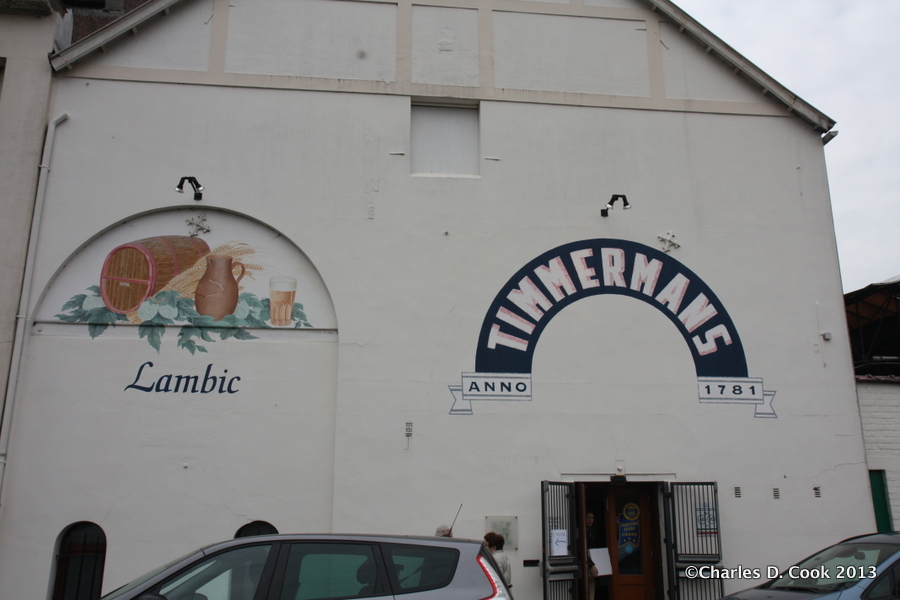Van Herreweghen added: “The reason we pump some of the wort to the boiling kettle and back to the mash tun is that we want to have some starch in the mix. We need starch for the brettanomyces yeasts to eat. So we heat it to the temperature we want, then pump it back to the mash tun to obtain 78 degrees Celsius, then everything is pumped to the filtering vessel.”


Van Herreweghen continued: “The unsaccharified liquid starch that is left in the boiling kettle is also pumped to the filtering vessel. Here, the spent grains are separated from the wort. But some of the starches that have not been saccharified remain, and these act as a food supply for the brettanomyces. These yeasts cannot transform the starch into alcohol and C02. They transform the starches into sugar, and afterwards the sugar is then transformed by saccharomyces or by yeasts into C02 or alcohol.”

I know that’s a bit complex, but Timmermans is a unique brewery. The rest of the process is more straightforward. The wort flows through copper taps and to the copper boiling kettle, where it will be cooked for at least four hours. During this period, aged hops are added.
After the long boiling period, the hot wort is pumped to the 200-hectoliter capacity copper coolship (koelschip in Dutch.)
Note that Timmermans only puts about 100 hl of wort into the vessel most of the time.

A coolship is a very shallow, wide vessel where the wort will cool overnight, to 21 degrees Celsius. As that process happens, wild yeasts in the air will fall into it. It is these yeasts-or some of them-that will soon ferment the wort. The little critters that will create the magic of spontaneous fermentation are called Brettanomyces Bruxellensis and Brettanomyces Lambicus.

I happened to visit when the coolship was full of warm wort-which is always a great experience at a lambic brewery! Most of the coolship at Timmermans is enclosed by glass on its sides, but in one area, it can be opened. “Right now, it tastes like a tea,” Van Herreweghen commented. “And you can even see some of the brettanomyces yeasts falling into the wort. Would you like to taste it?” Hmmm…well, yes! Taste it I did, and the warm tea-like liquid tasted delicious.

“Depending on the humidity in the air, about 5 to 10 percent of the wort in the coolship evaporates overnight. Usually it is about 7 percent,” Van Herreweghen remarked.
He then added: “What we brought back to the brewery, which had been missing for years, was a very long boil. At least four hours. As far as the hops, we only use aged ones. The reason for this is simple: if you use no hops, you will have a very aggressive, very acidic beer, which we do not want. If you use aged hops, there is no bitterness, and there is protection against lactic acid bacteria.”

He continued: “We have two types of bacteria here in the brewery: there is lactic acid, which does not need air to grow, and acetic acid, which needs air to grow. We keep the casks completely filled, because this protects against acetic acid bacteria. They can only grow on the surface of the wort. The surface to the air is the proportion of how acidic the beer will be. So we want to avoid the surface of the beer being in contact with the air. Most importantly, we want a well-balanced, tart, but not acidic lambic. And that is what we are making here.”


Leave a Reply